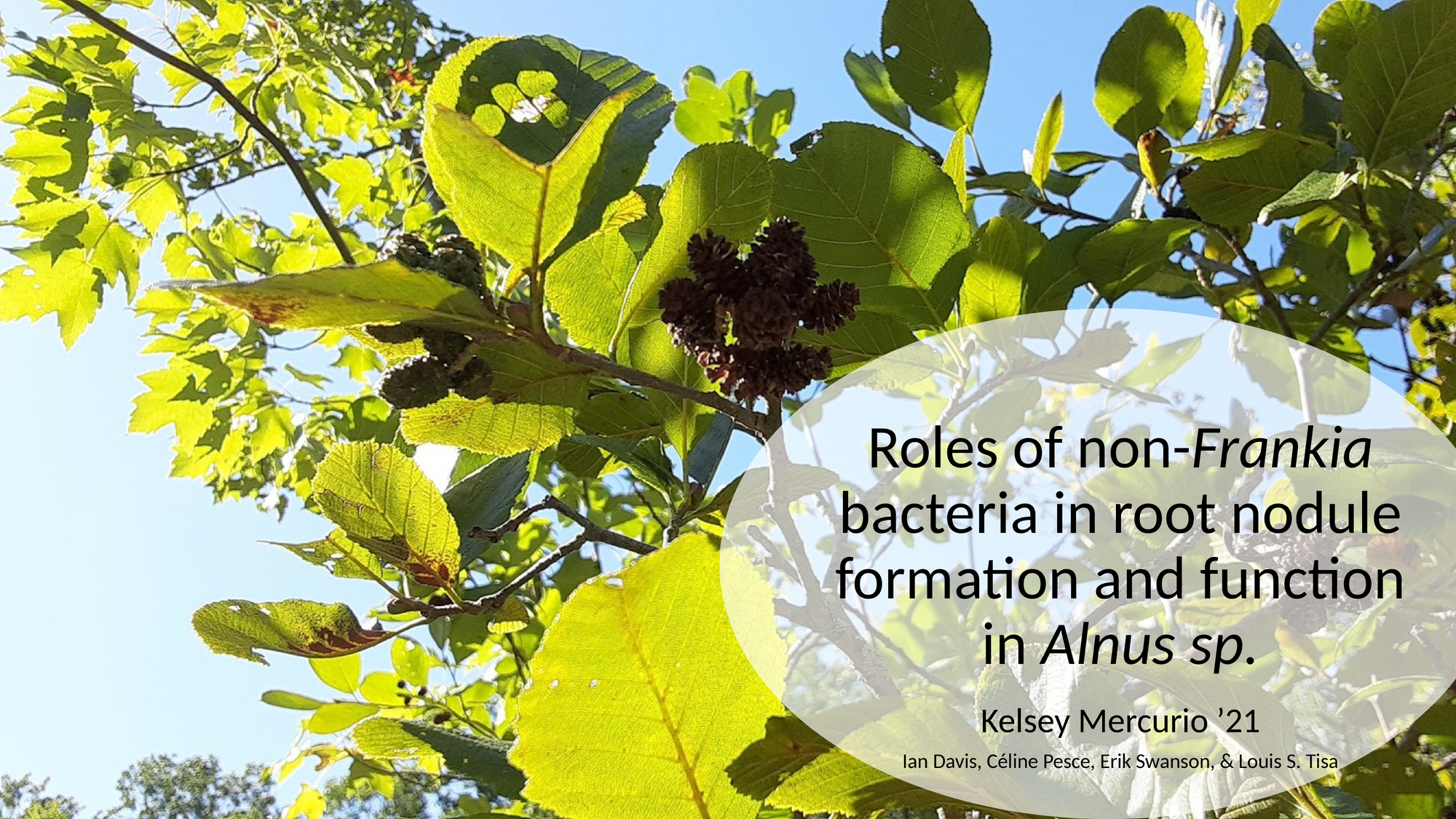Title:
Roles of non-Frankia bacteria in root nodule formation and function in Alnus sp.
Slideshow Presentation
Best viewed by downloading
Preview Converted Images may contain errors

Award:
Runner-up
Abstract
Plant roots are home to a wide variety of beneficial microbes; understanding and optimizing plant-microbe interactions may be critical to enhance global food security in a sustainable, equitable way. With the help of their nitrogen-fixing bacterial partner, Frankia, actinorhizal plants form symbiotic root nodules and play important roles in agroforestry and land reclamation. However, Frankia does not live alone in nodules, and the other microbial residents may contribute to nodule formation and function. We collected root nodules from alder trees (Alnus sp.) in 2018 and 2019, then isolated DNA and individual bacterial strains to characterize the nodule microbial community. Of 88 isolates, several were identified via 16S amplicon sequencing, and we chose twelve isolates for whole genome sequencing. To test effects on the host plant, we used 4 isolates to inoculate sterile Alnus glutinosa plants, both alone and in co-culture with Frankia. Nodule formation and plant growth and health were monitored under nitrogen-deficient conditions. We also tested several isolates for plant-growth-promoting properties including auxin production, siderophore production, and phosphate solubilizing ability. Thiopseudomonas sp. (strain 21), strain 85J, Streptomyces (24), and Paenibacillus (61) increased plant chlorophyll content in co-inoculation with Frankia, and strain 85J produced pseudonodules in the absence of Frankia. Multiple strains produced the auxins indole-3-butyric acid (12, 61), indole-3-acetic acid (17, 24), or both (9, 21, 70, 76). On exposure to root exudates from nitrogen-stressed plants, Bacillus sp. (76) produced less indole-3-butyric acid and more indole-3-acetic acid, possibly indicating a signaling pathway or regulatory response. Additionally, multiple strains produced siderophores (10, 12, 34, 69, 81, 88, 88A, 98) and/or solubilized phosphate (9, 30, 34, 55, 69, 81). Overall, non-Frankia bacteria living in alder nodules appear to play specific roles in plant health, nodule formation, and nodule function. Understanding how nodules function as a community rather than simply a 2-way interaction can help us optimize nitrogen fixation and inform our use of actinorhizal and legume plants in agriculture and bioremediation.
Authors
| First Name |
Last Name |
|
Louis
|
Tisa
|
|
Erik
|
Swanson
|
|
Celine
|
Pesce
|
|
Ian
|
Davis
|
|
Kelsey
|
Mercurio
|
Leave a comment
Submission Details
Conference URC
Event Interdisciplinary Science and Engineering (ISE)
Department Biology (ISE)
Added April 26, 2021, 8:25 a.m.
Updated April 26, 2021, 8:27 a.m.
See More Department Presentations Here